
Roots
Have you ever observed the quiet changes in your textured strands after a night of deep, uninterrupted rest? Perhaps a softness you hadn’t felt before, or a little more bounce in your coils. We often consider hair care a daytime endeavor, a ritual of washes, conditioners, and styling preparations. Yet, beneath the conscious routines, a profound interplay unfolds as we sleep, shaping the very resilience of our hair.
This nocturnal period, often overlooked, holds keys to understanding the fundamental needs of textured hair, from its inherent structure to its capacity for renewal. It’s a gentle reminder that true hair health begins not with what we apply, but with the unseen, consistent care our bodies provide.

Hair Anatomy and Physiology Specific to Textured Hair
The architectural marvel of textured hair, with its unique bends, twists, and coils, grants it a distinct character and inherent vulnerability. Unlike straight hair, which allows natural oils to glide down the shaft with ease, the curves of textured hair create natural barriers, making it prone to dryness. This structure also means more points of contact and friction, both with itself and external surfaces, rendering it susceptible to mechanical stress.
Each strand emerges from a follicle, a tiny organ nestled within the scalp, which itself operates under a complex biological rhythm. Understanding the cellular foundations of these strands and their origin points is the first step toward appreciating their needs, especially during restorative periods.
The follicle, the living root of each hair, is a dynamic entity, continuously cycling through phases of growth, regression, and rest. This cyclical behavior is not random; it is precisely timed by internal biological clocks, influenced by a myriad of internal signals and external cues. For textured hair, where strength and elasticity are paramount to maintaining its unique form, the integrity of these follicular processes becomes even more critical.
The nightly hours are a silent workshop where hair’s fundamental resilience is either built or diminished.

Textured Hair Classification Systems
The beauty of textured hair lies in its vast diversity, often categorized into types ranging from wavy (Type 2) to curly (Type 3) and coily (Type 4), with further sub-classifications (A, B, C) denoting the tightness of the curl pattern. This classification, while a useful guide, hints at deeper biological differences in follicle shape and growth direction that contribute to each unique texture. For instance, Type 4 hair, with its tight coils, typically has a flatter, elliptical follicle, causing the hair to grow in a spiral. This distinct growth pattern, combined with fewer cuticle layers in some instances, can make these strands more susceptible to moisture loss and mechanical damage.
Acknowledging these variations means recognizing that the impact of sleep quality, and thus the approach to nighttime care, may vary subtly across the spectrum of textured hair. A coily strand, for example, might experience more friction against a pillowcase than a wavy one, necessitating different protective measures.
- Type 2 Hair ❉ Characterized by a gentle S-shape, often with more open cuticles than straight hair, making it prone to frizz.
- Type 3 Hair ❉ Defined by distinct curls that range from loose spirals to tight corkscrews, requiring hydration to maintain their shape.
- Type 4 Hair ❉ Features tightly packed coils, often with a finer strand diameter and fewer cuticle layers, making it the most susceptible to dryness and breakage.

The Essential Lexicon of Textured Hair
To truly comprehend the needs of textured hair, a shared understanding of its specific language is beneficial. Terms like ‘porosity,’ which describes the hair’s ability to absorb and retain moisture, or ‘density,’ the number of individual strands on the scalp, are more than mere descriptors; they are diagnostic tools. High porosity hair, for instance, might lose moisture rapidly overnight, regardless of the sleep environment, necessitating a different hydration strategy than low porosity hair.
Understanding these attributes allows for a more tailored approach to care, recognizing that sleep quality’s influence is not a one-size-fits-all equation. It depends on the unique qualities of each person’s hair.

Hair Growth Cycles and Influencing Factors
Hair growth is a continuous cycle, marked by an active growth phase (anagen), a transitional phase (catagen), and a resting phase (telogen), before shedding (exogen) makes way for new growth. The duration of the anagen phase, which can span years, largely determines hair length. This cycle is finely tuned by internal biological clocks, hormonal signals, and nutrient availability. Disruptions to these internal rhythms, often a direct consequence of inadequate sleep, can shorten the growth phase or prematurely push strands into the resting and shedding phases, diminishing overall hair density and strength.
The body’s natural repair processes, including those vital for hair follicles, are heightened during periods of deep sleep. This is when cell turnover increases, and hormones essential for hair growth, such as growth hormone and melatonin, are produced. When sleep is consistently disturbed, these processes can become imbalanced, affecting the hair’s ability to regenerate and maintain its resilience.
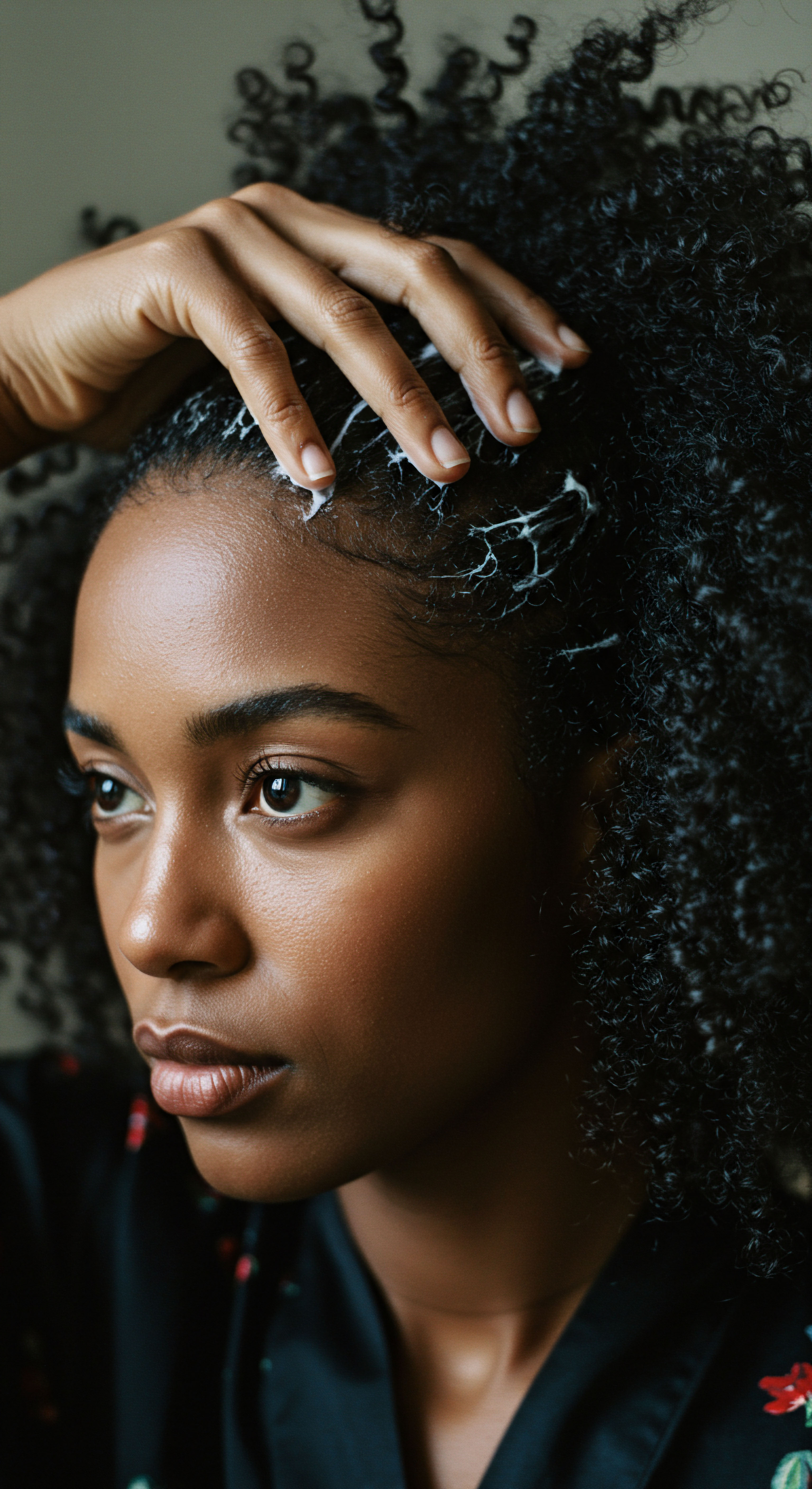
Ritual
Moving beyond the fundamental biology of hair, we arrive at the practices, both deliberate and subconscious, that shape its nightly experience. The hours spent in slumber are not merely a pause in our day; they represent a significant portion of our hair’s life, a time when intentional rituals can either fortify its strength or inadvertently compromise its vitality. This section delves into the practical wisdom of protecting textured hair during sleep, acknowledging the unique challenges and offering thoughtful approaches that align with its inherent needs. It’s about transforming the night from a potential source of stress for our strands into a period of deep, restorative care.

Building Personalized Textured Hair Regimens
A successful hair care regimen for textured hair is not a rigid formula but a dynamic, personalized system that adapts to individual needs and environmental factors. This adaptation extends to nighttime care, where the choice of products and protective styles can significantly influence hair resilience. Before sleep, strands benefit from moisture retention and gentle handling.
This might involve applying a leave-in conditioner or a light oil to seal in hydration, particularly for hair types prone to dryness. The goal is to create a barrier against the drying effects of the air and the friction of bedding.
Consider the climate you reside in; humid environments might necessitate lighter products, while arid conditions call for richer, more occlusive formulations to prevent moisture loss overnight. The regimen is a dialogue with your hair, listening to its responses and adjusting accordingly.

The Nighttime Sanctuary Essential Sleep Protection and Bonnet Wisdom
The pillowcase, often an unassuming element of our sleep space, holds considerable sway over hair health. Traditional cotton pillowcases, with their absorbent and textured fibers, can draw moisture from textured hair and create friction, leading to dryness, tangles, and breakage. This is where the wisdom of sleep protection, particularly the use of silk or satin bonnets and pillowcases, comes into its own.
Silk and Satin offer a smooth, low-friction surface that allows hair to glide effortlessly, minimizing mechanical stress. This gentle interaction helps to preserve delicate curl patterns, reduce frizz, and prevent the formation of knots and tangles that can lead to breakage during detangling sessions. For those with highly textured or fragile strands, this reduction in friction is not just a comfort; it is a critical protective measure.
| Material Cotton |
| Key Benefit Widely available, breathable |
| Potential Drawback High friction, moisture absorption, can cause frizz and breakage |
| Material Satin |
| Key Benefit Reduces friction, smooth surface |
| Potential Drawback May trap heat, can be made from synthetic materials |
| Material Silk |
| Key Benefit Reduces friction, retains moisture, breathable, hypoallergenic |
| Potential Drawback Higher cost, requires delicate care |
| Material Choosing the right material supports hair health by minimizing friction and moisture loss. |
The bonnet, a cherished tool in many textured hair routines, acts as a personal cocoon, shielding strands from the elements of the sleeping environment. It helps maintain applied products, keeps styles intact, and further reduces friction. The material of the bonnet matters, with silk and satin being preferred for their hair-friendly properties. The proper fit is also important; it should be secure enough to stay on through the night but not so tight as to cause tension on the hairline.
A well-chosen sleep accessory transforms nightly rest into a silent guardian for textured hair.

Protective Styling Encyclopedia
Beyond external coverings, the way hair is arranged before sleep significantly influences its condition upon waking. Protective styles, such as loose twists, braids, or pineapples, minimize tangling and reduce the hair’s exposure to friction. These styles keep strands contained, preventing them from rubbing against each other or the pillowcase, which can lead to mechanical damage.
For tightly coiled hair, chunky twists or plaits can be particularly effective in maintaining moisture and preventing the formation of single-strand knots. For looser curl patterns, a high pineapple bun can preserve volume and curl definition. The key is to avoid styles that create tension on the scalp or hair shaft, as this can lead to thinning over time.
- Loose Twists ❉ Sections of hair twisted loosely, helping to preserve curl definition and reduce tangling.
- Braids or Plaits ❉ Similar to twists, but often more secure, offering excellent protection against friction.
- Pineapple Bun ❉ Gathering hair loosely at the crown, allowing curls to remain mostly undisturbed.
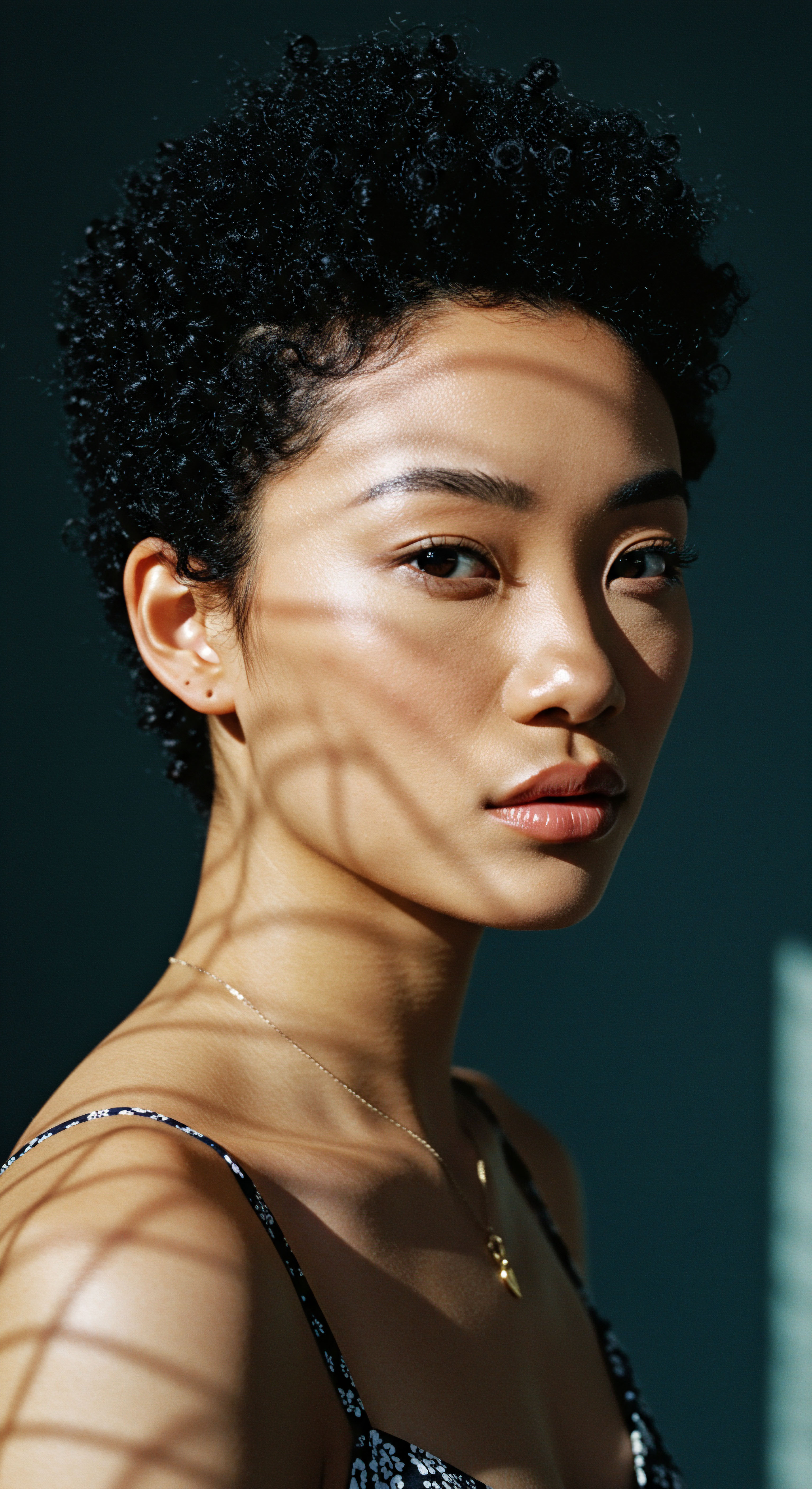
Ingredient Deep Dives for Textured Hair Needs
The effectiveness of nighttime care is amplified by the ingredients chosen for pre-sleep application. Humectants, such as glycerin and hyaluronic acid, draw moisture from the air into the hair, keeping it hydrated. Emollients, like shea butter and various oils, provide a softening and smoothing effect, creating a protective layer. Proteins, in balanced amounts, can fortify the hair structure, making it more resilient.
The nightly application of these ingredients, especially after cleansing, provides a sustained period for them to work their magic, supporting the hair’s natural repair processes that occur during sleep.

Textured Hair Problem Solving Compendium
Many common textured hair concerns, such as dryness, breakage, and frizz, can be mitigated by thoughtful nighttime practices. Addressing these issues often begins with understanding their root cause in the sleep environment. For instance, consistent dryness might point to the need for a more occlusive overnight treatment or a switch to a silk pillowcase.
Persistent tangling could signal a need for looser protective styles or more thorough detangling before bed. By viewing the night as an active part of the problem-solving process, we unlock new avenues for hair health.

Relay
Stepping into a deeper current, we confront the intricate dance between our inner biological rhythms and the very fabric of our textured hair. The conversation around sleep quality and hair resilience extends beyond visible practices, delving into the subtle, yet powerful, influence of our body’s internal clocks and the unseen processes that unfold during slumber. This section ventures into the scientific underpinnings, exploring how the circadian rhythm, hormonal fluctuations, and cellular repair mechanisms during sleep profoundly shape the strength and vitality of textured strands. It’s an invitation to consider the hair not just as a physical adornment, but as a sensitive barometer of our internal equilibrium, responding to the silent symphony of our nightly rest.

How Do Circadian Rhythms Govern Hair Growth and Health?
The human body operates on a remarkable 24-hour cycle, known as the circadian rhythm, which dictates everything from sleep-wake patterns to hormone release and cellular repair. Hair follicles, far from being inert structures, possess their own peripheral circadian clocks, allowing them to synchronize with the body’s broader rhythms. These internal timers influence the precise timing of hair growth, regression, and resting phases.
During deep sleep, when the body prioritizes restoration, the activity of hair follicle stem cells is heightened. This is a period of increased cell turnover and protein building, essential for repairing and growing hair. When this delicate circadian balance is disrupted, perhaps by inconsistent sleep schedules or insufficient rest, the hair growth cycle can be thrown off course. Studies indicate that sleep disturbances can shorten the anagen (growth) phase, prematurely pushing hair into the telogen (resting) phase, which can lead to increased shedding and thinning over time.
The molecular mechanisms behind this are complex, involving clock genes like BMAL1 and PER1. Research suggests that dysregulation of these genes within hair follicles can delay the progression of the growth phase. This intricate connection underscores why consistent, quality sleep is not merely about feeling rested, but about supporting the very cellular machinery that maintains hair density and strength.

What Role Do Hormones Play in Hair Resilience During Sleep?
Sleep is a critical period for hormonal regulation, and these hormonal shifts have a direct impact on hair health. Two key hormones stand out ❉ cortisol and melatonin.
- Cortisol ❉ Often termed the “stress hormone,” cortisol levels naturally fluctuate throughout the day, typically peaking in the morning and declining at night to facilitate sleep. However, chronic sleep deprivation leads to consistently elevated cortisol levels. High cortisol is linked to a temporary form of hair loss known as telogen effluvium, where hair follicles are prematurely pushed into the resting phase, resulting in increased shedding. This stress-induced response weakens the hair’s ability to remain anchored and resilient.
- Melatonin ❉ While widely known for its role in regulating sleep-wake cycles, melatonin also plays a significant, though still being fully understood, role in hair follicle biology. Produced primarily during darkness, melatonin acts as a powerful antioxidant, protecting hair follicles from oxidative stress. Some research suggests melatonin may directly stimulate hair growth and extend the anagen phase of the hair cycle. A decline in melatonin production due to poor sleep can therefore diminish this protective and growth-promoting effect.
The interplay of these hormones during sleep forms a crucial backdrop for hair health. When sleep is optimal, cortisol levels remain balanced, and melatonin production supports cellular repair and growth, contributing to stronger, more resilient strands.
The subtle symphony of sleep hormones orchestrates hair’s nocturnal repair and growth.
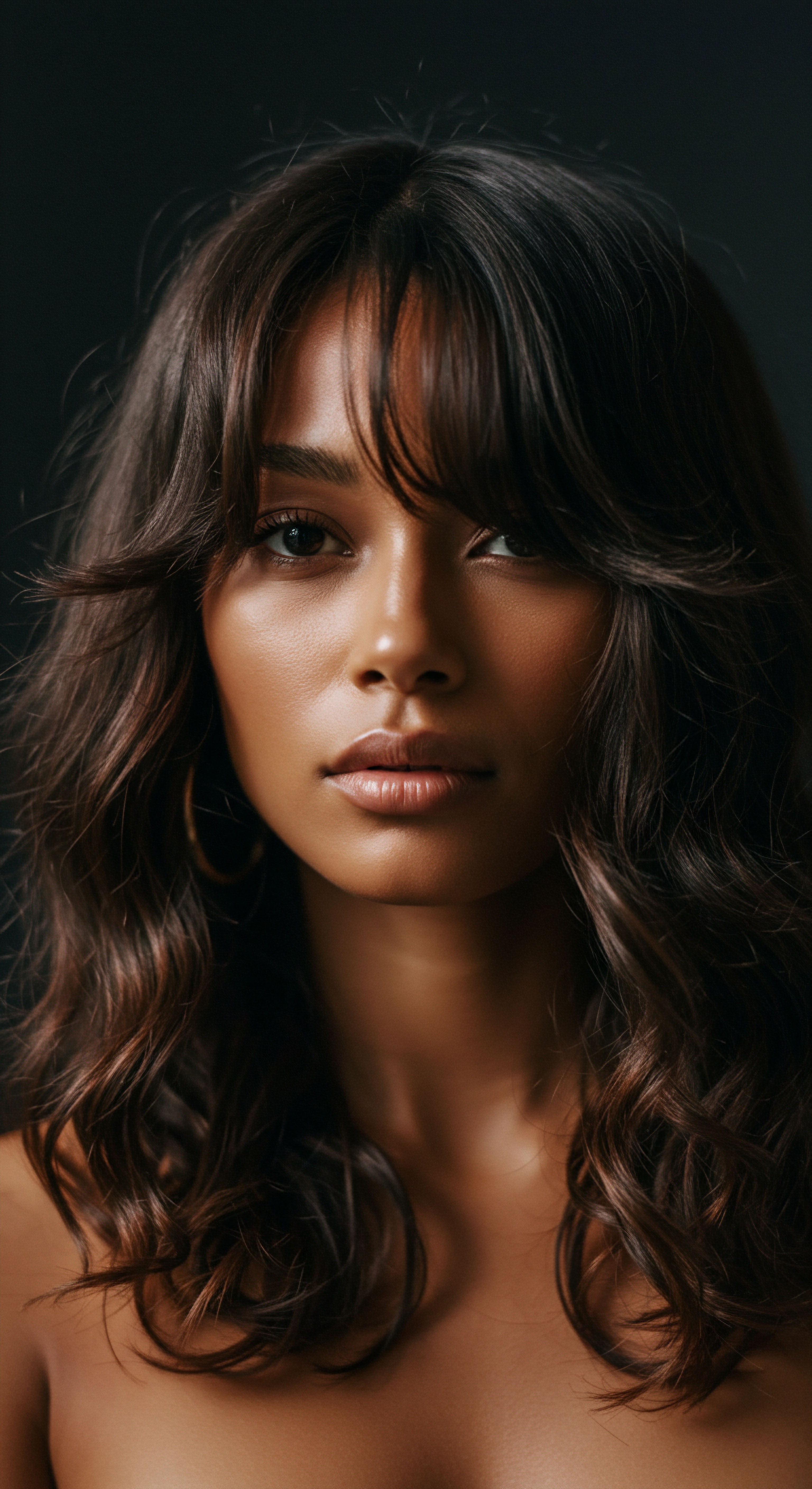
Can Sleep Positions and Pillow Materials Significantly Impact Hair Health?
Beyond the internal biological processes, the physical environment of sleep holds tangible consequences for textured hair resilience. The simple act of resting our head on a pillow can subject strands to mechanical stress, particularly for hair types prone to tangling and breakage.
Traditional pillowcases made of cotton or other rough fabrics create considerable friction as we shift during sleep. This friction can lead to:
- Hair Breakage ❉ The rough fibers snag and pull at the hair shaft, causing strands to snap, particularly at points of high friction like the nape of the neck or along the edges.
- Moisture Loss ❉ Cotton is highly absorbent, drawing essential moisture from hair strands, leaving them dry, brittle, and more susceptible to damage.
- Disrupted Curl Patterns ❉ The friction can disrupt the natural coil or curl pattern, leading to frizz and loss of definition upon waking.
A compelling statistic highlights this physical impact ❉ switching to silk pillowcases has been reported to result in up to a 90% Reduction in Hair Breakage. This striking figure, drawn from a study mentioned in the Journal of Cosmetics, Dermatological Sciences and Applications, suggests that the physical environment of sleep is not a minor consideration but a major determinant of hair resilience. This is particularly relevant for textured hair, which, due to its structural characteristics, is already more vulnerable to mechanical stress. The smooth surface of silk or satin allows hair to glide without resistance, preserving its moisture and structural integrity.
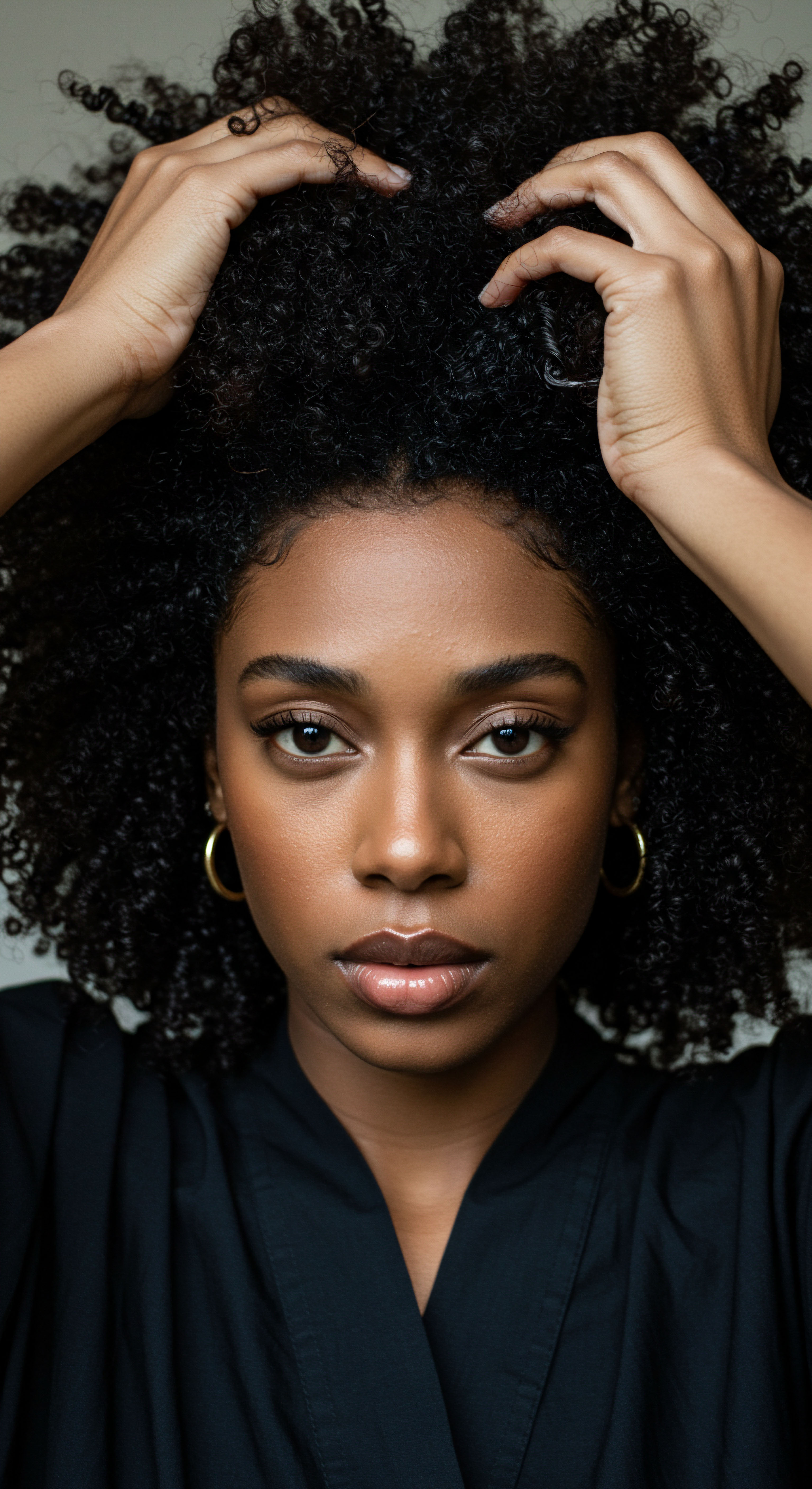
How Does Scalp Health Connect to Sleep Quality?
The scalp, the fertile ground from which hair grows, is a dynamic ecosystem whose health is inextricably linked to overall bodily well-being, including sleep quality. A healthy scalp environment is paramount for robust hair growth and resilience. During sleep, the body’s repair mechanisms extend to the scalp, addressing cellular damage and maintaining barrier function.
Poor sleep can lead to increased stress, which in turn can cause inflammation in the body, including the scalp. Chronic inflammation can impair hair follicle function, potentially contributing to hair loss or a less-than-optimal environment for hair growth. Additionally, blood circulation to the scalp, vital for delivering oxygen and nutrients to hair follicles, can be compromised by insufficient rest.
A well-nourished scalp, supported by consistent, quality sleep, provides the best foundation for resilient textured hair. A recent instrument, the Hair & Scalp CARE questionnaire, assesses the psychological impacts of dermatological well-being, including scalp and hair health, linking healthier hair and scalp to lower levels of perceived stress and good sleep health.
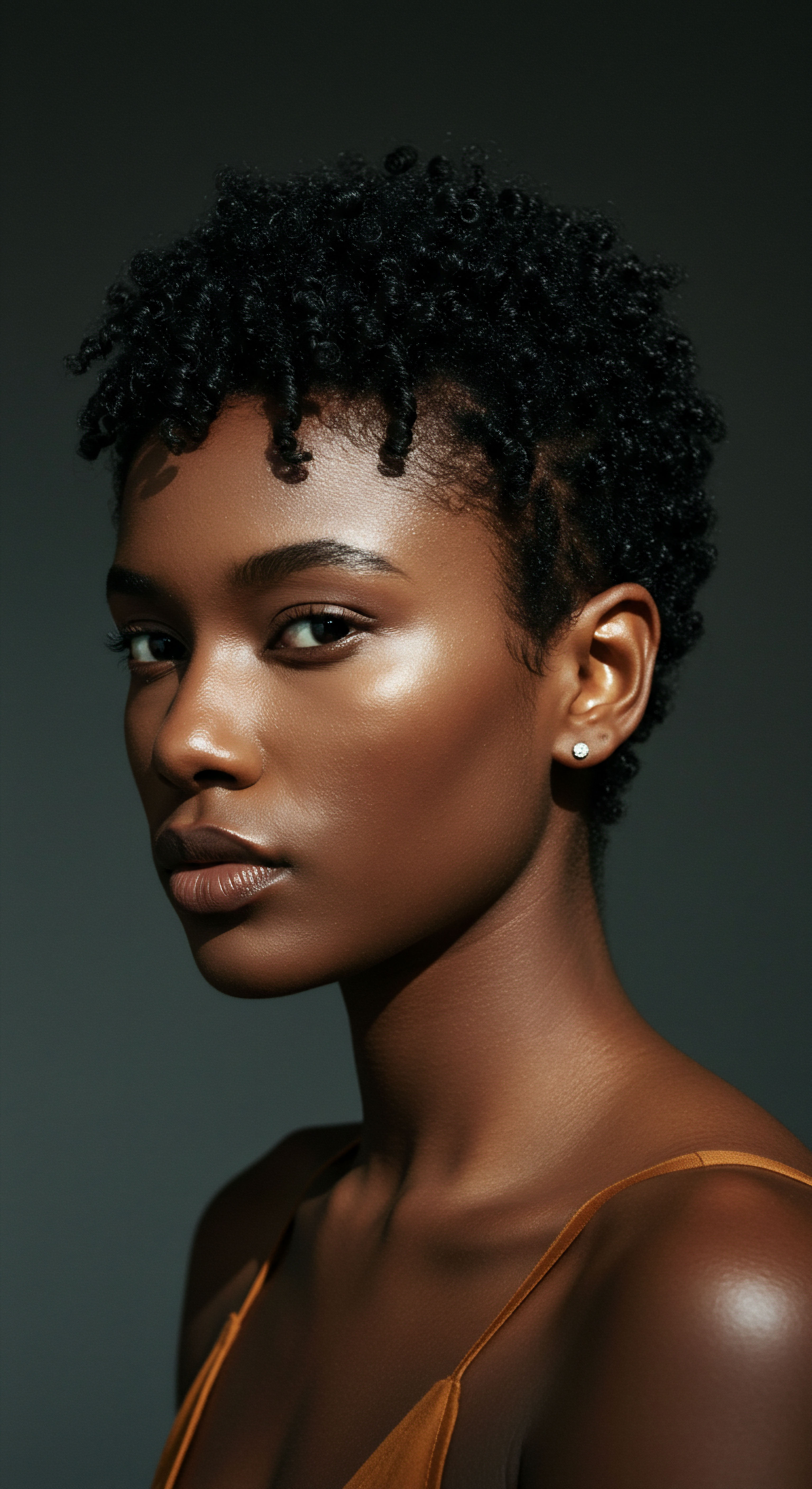
Reflection
As the day recedes and the world quiets, our textured hair, too, enters a period of profound transformation. The journey through the roots of its biology, the rituals of its care, and the intricate relay of internal processes reveals a truth often whispered but seldom deeply heard ❉ sleep is not merely a pause, but an active, potent force in the life of our strands. It is during these hours of repose that the delicate balance of hormones, the meticulous work of cellular repair, and the gentle glide against a smooth surface collectively decide the narrative of our hair’s strength and vibrancy. To truly honor textured hair, then, is to recognize the sanctity of its nocturnal sanctuary, understanding that its resilience is a testament to both our conscious care and the body’s silent, restorative wisdom.

References
- Al-Hakami, H. (2024). Impact of Sleep Deprivation on Hair Health. Clinikally.
- Leschziner, G. (2021). Seven Deadly Sins ❉ The Biology of Being Human. Atria Books.
- Lin, S. et al. (2009). Circadian Clock Genes Contribute to the Regulation of Hair Follicle Cycling. PLOS Genetics.
- Mandal, R. & Singh, R. (2023). Sleep and Hair Loss ❉ Can Lack of Sleep Cause Hair Loss? Asmed Hair Transplant.
- Niu, Y. Wang, Y. Chen, H. Liu, X. & Liu, J. (2023). Overview of the Circadian Clock in the Hair Follicle Cycle. Biomolecules, 13(7), 1068.
- Parker, O. (2025). Nighttime Haircare. Ebook.
- Pereira, S. (2025). The effect of sleep quality on hair regrowth. PNWS-AWWA – Drinking Water Management & Resources for Northwest Professionals.
- Ramirez, M. (2023). Sleep And Hair Growth ❉ Enhance Your Hair Health Through Better Sleep. Trichology.
- Salsberg, S. (2024). Can Lack of Sleep Make You Lose Hair? Uncovering the Connection. Hair Doctors.
- Sikora, M. (2022). Tested the benefits of silk pillowcases. Cillouettes.
- Stewart, R. (2025). Silk Pillowcase Benefits for Hair Extensions Users. Digital Library Hub.
- The Clifford Clinic. (2024). Unraveling The Myth ❉ Can Silk Pillows Prevent Hair Loss?
- Treatment Rooms London. (2024). Can A Lack of Sleep Cause Hair Loss?
- Wong, S. (2017). How Does the Circadian Rhythm Affect Hair Growth? LearnSkin.
- Yeom, M. (2025). Time-of-day dependent promotion of keratinocyte differentiation by Cinnamomum cassia bark extract through the p38 MAPK Pathway. PLOS ONE.